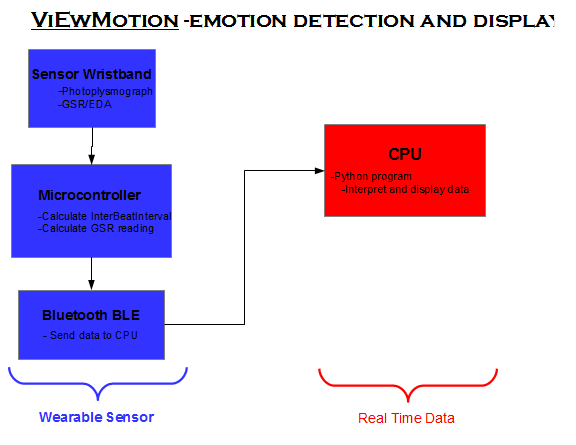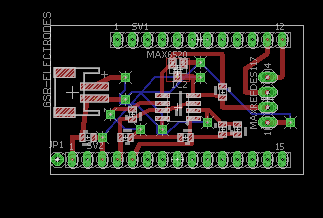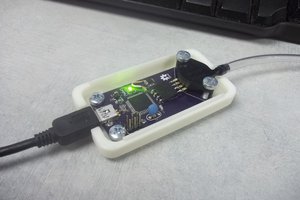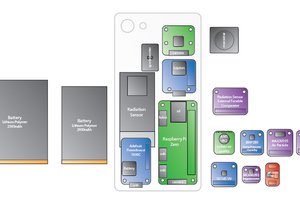This project is completely Open Source (code) and Open Hardware (schematics, boards, parts, etc.)
ViEwMotion (View Emotion)
The aim of this project is to improve emotional communication between with neurological disorders (primarily those in the autistic spectrum but applies to many other areas as well) and those without neurological disorders.
To achieve this aim, what is needed is a method of Analysis and Display of Emotional response, in Real Time using minimally invasive physiological sensors.
Project Goals:
- Increase emotional communication between individuals with non typical neurological conditions and those without them and increase emotional awareness for individuals utilizing the device.
- Assess and display emotional response in real time using non-invasive physiological measurements.
- Be a wearable device that is comfortable and does not interfere with normal activities of daily living.
- Data is locally processed and interpreted without the use of an internet connection or cloud based service.
- Inexpensive (ideally under $50) and built from off the shelf parts.
- Completely Open Source (software, firmware and hardware). All portions clearly explained so that it can be altered and extended as needed.
Currently available methods for determining emotional response utilize facial expressions from video or still pictures. At present these methods are closed source (even if they are free to use) and utilize cloud based processing. In addition, these methods do not work well on individuals who have difficulty in displaying emotion. This is where viEwMotion comes in.
 Tom Meehan
Tom Meehan

 I put this together after working out a number of bugs while building the circuits on a solder-less breadboard and testing different configurations.
I put this together after working out a number of bugs while building the circuits on a solder-less breadboard and testing different configurations. 

 Jason Webb
Jason Webb
 tiefpunkt
tiefpunkt
 Samuel Wantman
Samuel Wantman
 peter jansen
peter jansen